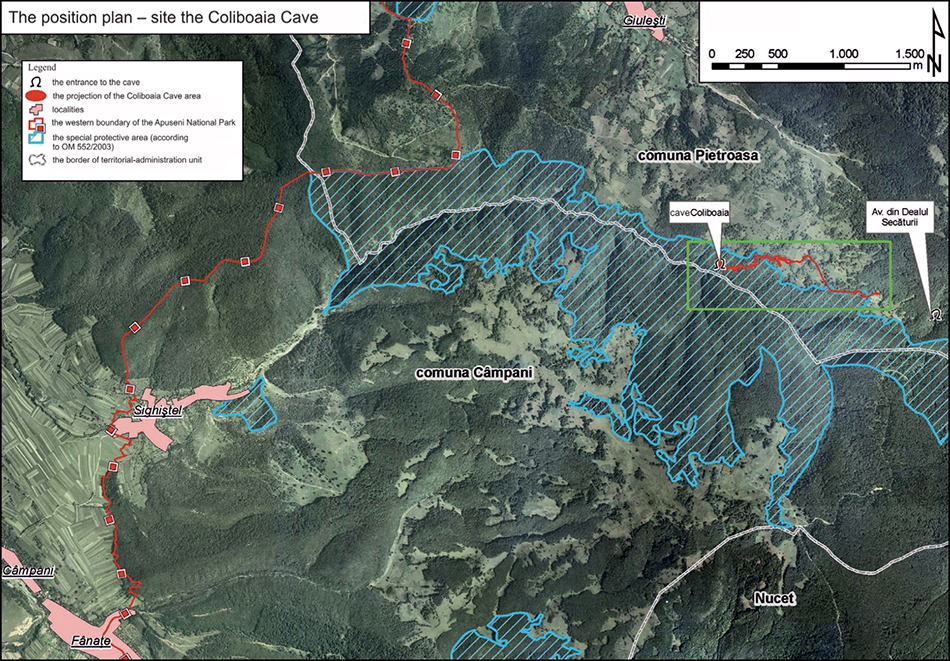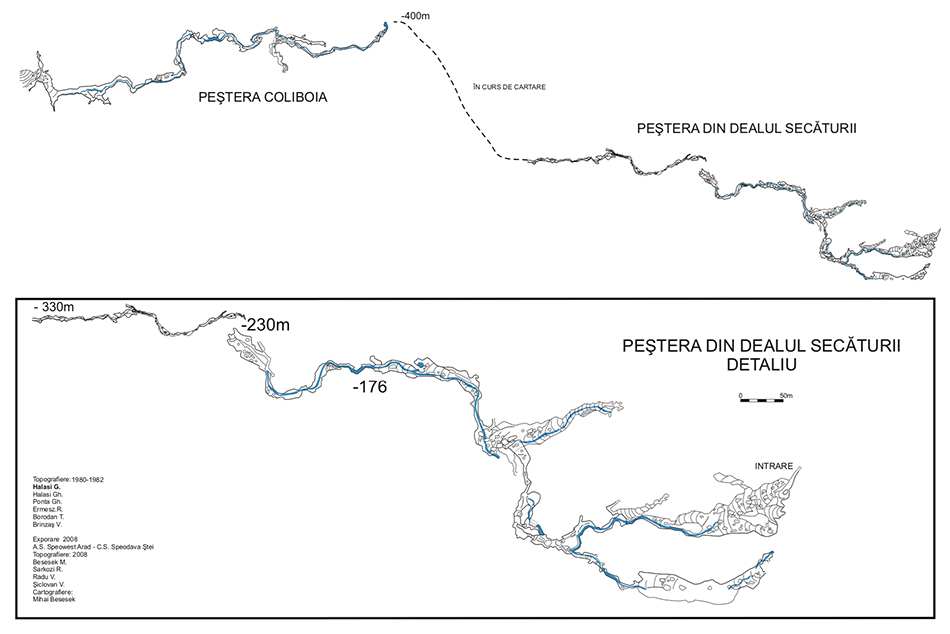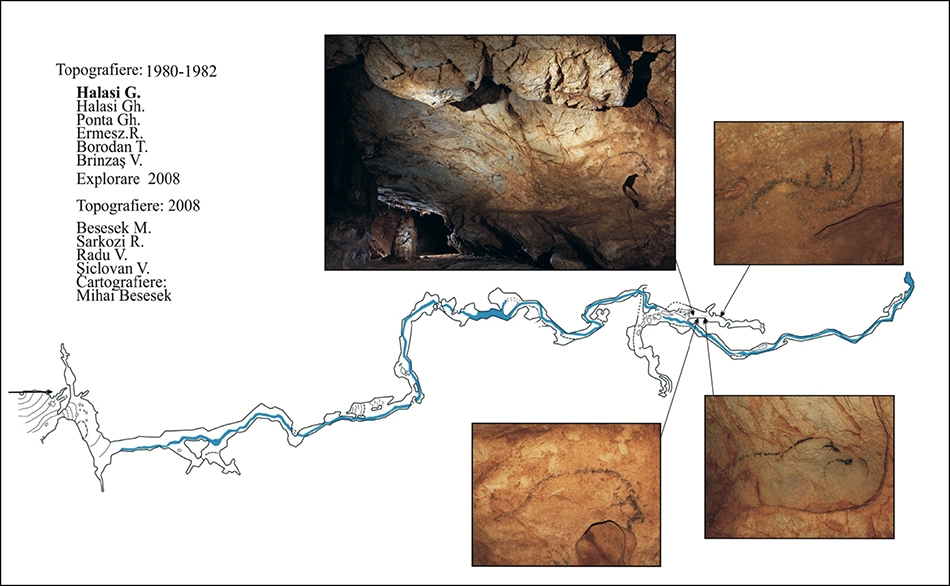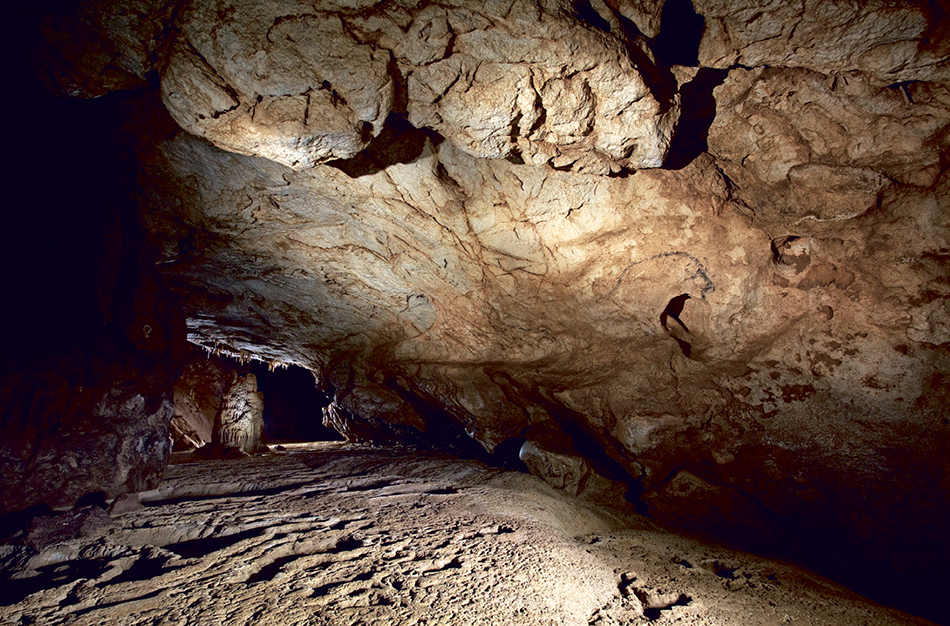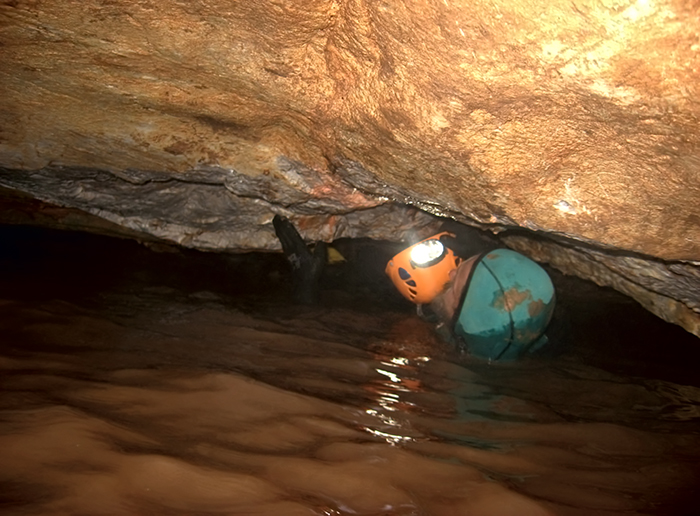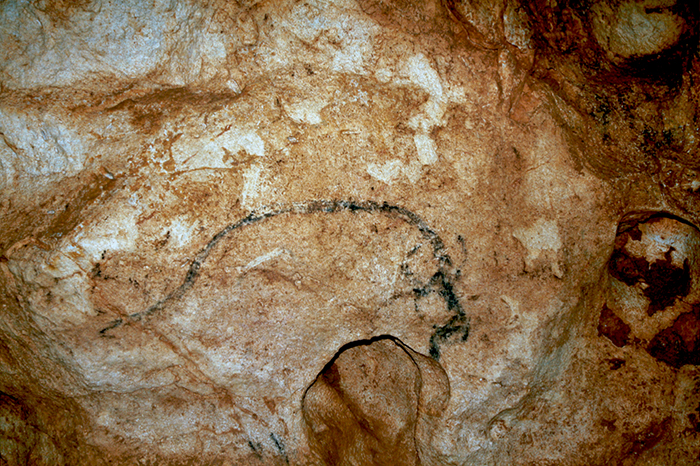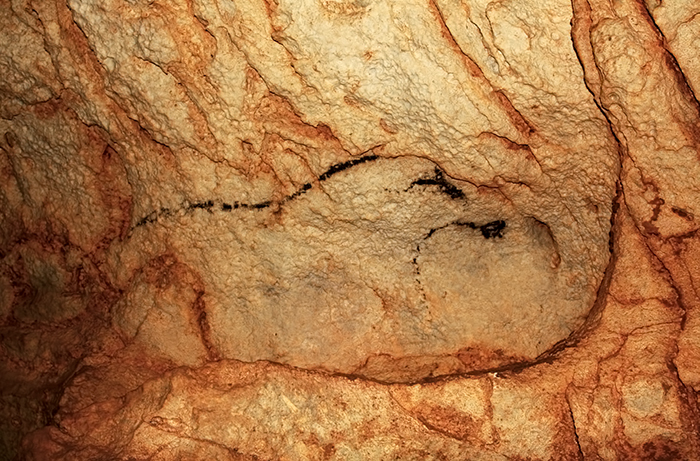Pestera Coliboaia - Coliboaia Cave Rock Art
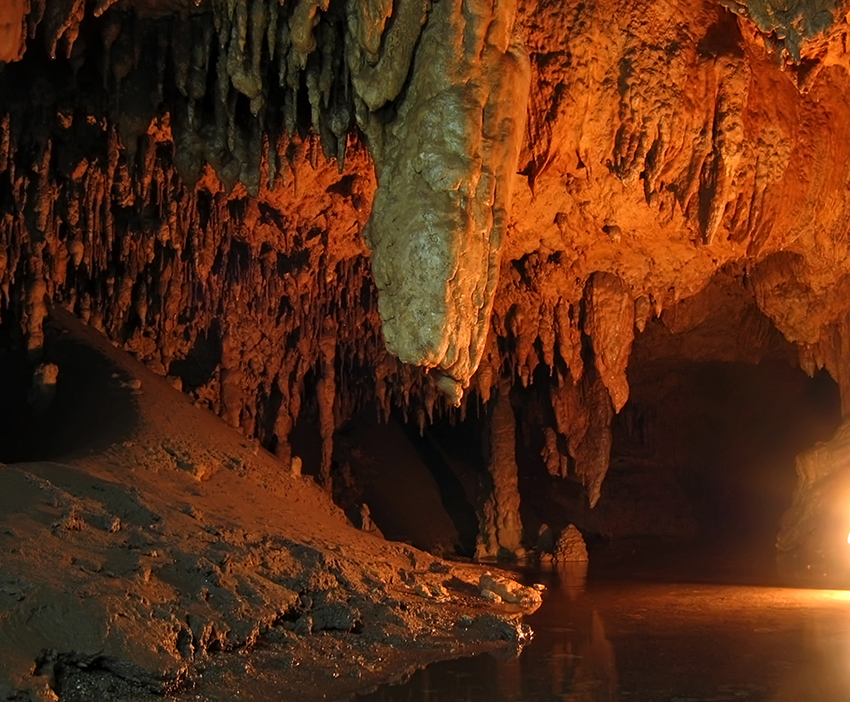
Coliboaia Cave
Photo: Tommy from Arad
Permission: Creative Commons Attribution 2.0 Generic license
Proximal source: Wikipedia
Central Europe's oldest cave paintings discovered at Coliboaia Cave
http://www.iasiinvest.ro/index.php?option=com_content&task=view&id=35840&Itemid=63
IASI INVEST - cotidian online de business
The oldest cave paintings in Central Europe, estimated at between 23 000 and 35 000 BP, have been discovered by a team of Romanian speleologists at the Coliboaia Cave, Campani, Bihor County, western Romania, and certified by French paleontologists. The chairman of the Federation of Romanian Speleologists says it is the first time that Paleolithic paintings so old have been certified in Central Europe. Judging by their style, they could be rated as Gravettian or Aurignacian.
Those who discovered the paintings nearly three months ago are speleologists Tudor Rus (the Spedova Stei Cave Exploration Club), Mihai Besesek, Valentin Alexandru Radu and Roxana Laura Toiciu (the Seowest of Arad Cave Exploration Association), Marius Kenesz (Speo Club of Zarand), who explored the Dealul Secaturii - Coliboaia Cave in the Sighistel Valley, near the village of Campani.
After the discovery, protection was secured for the paintings while French specialists, who arrived in Romania on 16th May 2010, conducted further research for certification.
The Coliboaia Cave is crossed by an underground river that branches off in several sumps, which makes cave exploration even more difficult. The paintings were conserved in a high gallery. Other paintings were probably destroyed by water.
The black cave paintings depict animals, including a bison, a horse and possibly a feline; one or two bear heads and two rhinoceros. Some engravings were also discovered at the same place, where the floor is scattered with bear bones.
During their stay in the cave, the bears are said to have scratched the cave walls.
A French team composed of spelaeologists Marcel Meyssonnier and Valerie Plichon; Michel Philippe, a paleontologist specialising in cave bears; historian Francoise Prudhomme and cave art specialists Jean Clottes and Bernard Gely have attested to the authenticity of the paintings. Clottes is also an honorary General Heritage Conservationist and cave art expert for ICOMOS and UNESCO.
The cave has been placed under the conservation care of the Federation of Romanian Speleologists and the Apuseni Natural Park Administration, under the archeological authority of the Cris Lands Museum of Oradea and the Bihor County Council.
Map of the Coliboaia Cave region.
Photo: Ghemiş et al. (2011)
The Coliboaia — Dealul Secăturii cave system
Photo and text: Ghemiş et al. (2011)
Coliboaia cave — general view. The right wall of the 'Art Gallery'.
Photo and text: Ghemiş et al. (2011)
������ ��� ����� ��� ��������� ������� �� ������� �� �������� ���� ���� �������� ���� � ���� �������� ���� ������������� ���� ������� �� ������� �� ���� �� �������� �� �������������� ����� ������� ������� �������� �� ���� �� �������
The 'Art Gallery'.
Photo and text: Ghemiş et al. (2011)
Rhinoceros Head.
This can be only be seen if researchers lie in the water of Siphon 2 with their heads bobbing on the surface.
Photo: Ghemiş et al. (2011)
Here the diver has taken off his helmet with the light, and is using it to examine the rhinoceros head painting.
Photo: Ghemiş et al. (2011)
Bison.
This artwork makes use of the relief of the cave wall to enhance the shape and impact of the image.
Photo: Ghemiş et al. (2011)
Horse or felid (i.e. member of the cat family).
Photo: Ghemiş et al. (2011)
Unidentified figure.
( To my eyes it has some of the elements of the outline of a mammoth - Don )
Photo: Ghemiş et al. (2011)
The Great Chamber
This shows a caver standing hip high in the water of a lake in the cave system. A wonderful photograph by a highly skilled practitioner of the art.
Photo: Ghemiş et al. (2011)
Coliboaia Cave
"Coliboaia Cave is pervaded by an underground river, which forms several traps, making it exceptionally difficult to penetrate the galleries. Up until now, the cave was not even included on the list of protected caves, although the area is part of Apuseni Natural Park. There have been several expeditions there, but five cavers went deeper inside than all the others and have gone through three completely flooded areas, after which they came across a high gallery, and found the wall paintings"explained Lascu.
According to the source, the paintings are black and represent animals including a bison, a horse, possibly a cat, one or two bear heads, and two rhinoceroses. An engraving, representing the torso of a woman, was also found, probably a symbol. "On the ground were the bones of a bear. Some of the paintings were damaged by water and there was evidence of bears that have been in the cave in the form of scratches and polishing on the walls" said the cavers.
The paintings were verified by a team led by Jean Clottes, one of the most prominent specialists in cave art in the world, and the team also included Gély Bernard, a specialist in cave art, as well as speleologists Meyssonnier and Valérie Marcel Plichon, and Philippe Michel, a paleontologist specialising in cave bears, as well as Françoise Prudhomme, a specialist in general prehistory.
Following tests, experts confirmed the authenticity of paintings and engravings. "After their examination, the paintings can be classified as belonging to an ancient period of mural art, the Gravettian and Aurignacian (between 23 000 and 35 000 years BP". It is the first time in Central Europe that parietal art so old has been discovered.
Following the discovery, by courtesy of the Romanian Federation of Speleology and the Apuseni Natural Park Administration, the cave was immediately put under protection, and given conservation status, under the authority of the archaeological museum and the administration of Crisurilor Bihor County Council, to be included in a complex multinational multi-institutional research project.
"The archaeological site is extremely valuable, comparable to Sarmisegetuza Cucuteni, for example", said Lascu.
Text above from: http://www.ebihoreanul.ro/stiri/ultima-or-31-1-19/cele-mai-vechi-picturi-paleolitice-din-europa-centrala-descoperite-intr-o-pestera-din-bihor-88112.html#

Map of cave location
Photo: http://www.ceti.pl/~miekinia/encyklopedia/encyklopedia.php?lit=CA&limit=2&lang=1
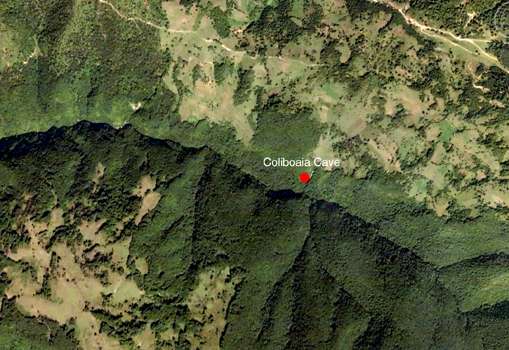
Position of Coliboaia Cave.
The cave is at:
46° 31.894'N, 22° 35.755'E
It is roughly ten kilometres south-east of Pietroasa, (which translates as "stony"!), the closest big town.
It is limestone country, and it is a karst landscape, with sinkholes, bridges (from collapsed caves) and lots of caves in the Apuseni Mountains area, or Muntil Apuseni. There is a thriving caver community in the area, as you would expect, as well as people very interested in the conservation of bats, which love the place for obvious reasons.
Photo: Google Earth
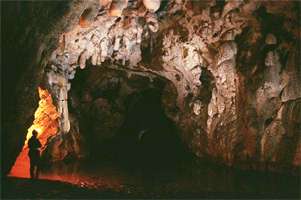
This is a beautiful shot over the water which floods many parts of the cave.
The entry is triangular, only 2 metres tall, surrounded by a high limestone cliff, and opens to the top of a slope of scree which descends into a chamber about 15m wide and 40m long, followed by a large, straight gallery, which is crossed by a watercourse with an impenetrable sump.
Two other traps complicate the underground route. A stream runs through most of the clay terraces and finishes, depending on the amount of water in it, either at the end of the gallery, or at the southern wall of the room.
It reappears finally as an intermittent spring below the cave entrance. Water may flood the entire gallery floor. Concretions are limited to the last third of the gallery, where the walls are covered with large stalagmites. The total length of cave is 750m.
Photo: © Dinu Mititeanu
Source, and text translated from: http://alpinet.org/main/poteci/puncte_ro_t_pestera-coliboaia_id_3474.html
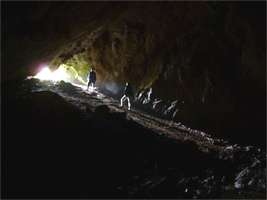
Coliboaia cave entrance and the steep ramp down to the first chamber.
Photo: © Moni and Cristi Davidovici
Source: http://ferestresprenatura.blogspot.com/2009/03/calatori-in-lumea-intunericului.html
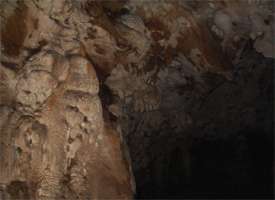

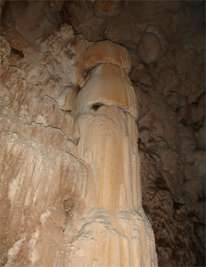
The cave itself is well known as an interesting cave to explore.
Photo: © dorinpetrut
Source: http://good-times.webshots.com/album/559627262SeBrvh?start=12
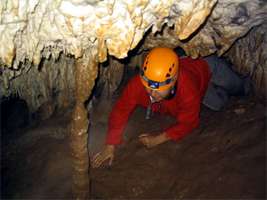
However, it is not easy to get to some parts of the cave, and good equipment and knowledge of caving is required.
Photo: © Hoinarii
Source: http://picasaweb.google.com/lh/photo/XlB9K5Ws_dnbt31iLUdbMg
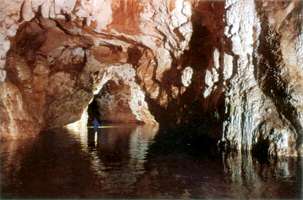
One of the many lakes which must be crossed to gain the further parts of the cave.
Photo: © S. Kotarba
Source: http://www.sktj.pl/epimenides/jaskinie/jask11.html
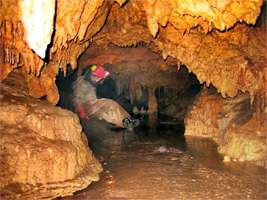
Stream in Coliboaia cave.
Photo: © by tmtibimate
Source: Panoramio/Google Earth
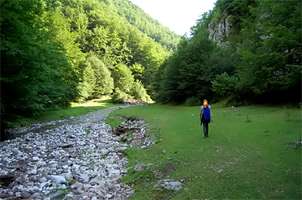
The approach to the cave is along a very pleasant valley, the Valea Sighistelului, or Sighistel Valley. The Sighiştel River is a tributary of the Crişul Negru River in Romania.
Photo: © APLR
Source: http://www.batlife.ro/?p=284&lang=ro&album=4&gallery=19
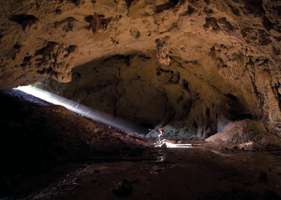
This photograph shows the entrance ramp down to the first chamber, with a shaft of sunlight illuminating the caver. This is a superbly realised shot, and achieves the difficult photographic task of including the bright sunlight, yet showing details of the cave floor and roof.
Photo: © Andrei Posmoşanu. Used by the kind permission of the photographer.
Source: www.momente.ro/php_files/albume_foto/sec_000/album_apuseni.pdf
I found this photograph in a well designed and executed PDF document with the title:
Through the Apuseni Mountains
Above and Beneath the Earth
Partners in this project were: Administratia Parcului Natural Apuseni, Asociatia "Zöld Kör" Ungaria,
with the support of: Consiliul Judetean Bihor, Federatia Româna de Speologie, Asociatia Rangerilor
din România, National Geographic România, Traditional Casa Experience and Apuseni Experience.

Coliboaia cave entrance portal.
Photo: © by tmtibimate
Source: Panoramio/Google Earth
References
- Ghemiş C. et al., 2011: An exceptional Archaeological discovery — the 'Art Gallery' in Coliboaia Cave, Apuseni Mountains, Romania, Acta Archaeologica Carpathica, Vol. XLVI, 2011 PL ISSN 0001-5229
Back to Don's Maps
 Back to Archaeological Sites
Back to Archaeological Sites
